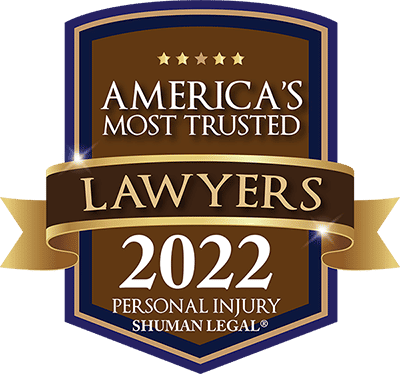
If you’re questioning the risks of speeding, you’re in the right place. This article provides 10 reasons why speeding is dangerous, highlighting how this risky behavior extends beyond breaking the law and into threatening the very lives of all road users. We skip the fluff and dive straight into facts and figures that cast a stark light on the critical importance of adhering to speed limits. Read on to equip yourself with knowledge that could save lives.
Key Takeaways
- Speeding is a major factor in traffic fatalities, contributing to 29% of all traffic deaths in 2021, and it significantly reduces vehicle control and the effectiveness of safety measures.
- Driving above the speed limit dramatically increases a vehicle’s stopping distance and reduces a driver’s reaction time, greatly enhancing the risk of severe accidents.
- Adverse weather conditions, aggressive driving behavior, financial penalties, and legal repercussions, coupled with the increased severity of crashes, highlight the myriad of dangers associated with speeding.
Your search for help ends here. Let’s get started, for FREE.
The Perils of Exceeding Speed Limits
Nearly one-third of all traffic fatalities are due to speeding. In 2021 alone, it contributed to 29% of all traffic fatalities, resulting in 11,057 fatal motor-vehicle crashes. With such alarming statistics at hand, it’s pivotal to understand the risks that speeding poses.
So, why do drivers exceed speed limits? The reasons vary from:
- Not considering the speed limit important
- Driving carelessly
- Being unaware of the speed limit
- Driving more powerful vehicles
- Feeling time pressure
- Being influenced by a fast-paced society
Unfortunately, the consequence of these reasons is not just limited to the driver.
Exceeding the posted speed limit can also make speeding dangerous, endangering the safety of other road users. The risk of accidents is heightened, and the driver’s control over their vehicle is diminished, making roads a perilous place for everyone, especially when posted speed limits are not followed.
Compromised Vehicle Handling at High Speeds
 When a driver travels at high speeds, the vehicle’s handling is significantly compromised, making it more susceptible to accidents. Here are some effects of high-speed driving:
When a driver travels at high speeds, the vehicle’s handling is significantly compromised, making it more susceptible to accidents. Here are some effects of high-speed driving:
- Vehicles respond more quickly to steering
- Vehicles respond more slowly to braking
- Greater potential for loss of vehicle control
- Reduced effectiveness of safety equipment
Speeding also exerts increased traction forces on the tire-road surface interaction, potentially resulting in reduced traction and compromised maneuverability. Moreover, the influence of crosswinds on the vehicle’s steering stability increases with excessive speed, impacting the overall stability.
The challenge of maneuvering vehicles at higher speeds is influenced by Newton’s First Law of Motion and the science of traction. Distracted driving can further exacerbate the loss of control of vehicles at high speeds.
Extended Stopping Distances and Their Impact
Extended stopping distance is an often-overlooked consequence of speeding. A car’s braking distance increases as the square of its speed, meaning if you double the speed of your car, the braking distance increases fourfold.
Yet, stopping distance isn’t solely affected by speed. Other factors that play a crucial role in stopping distance include:
- Road and tire conditions
- The driver’s field of view and ability
- The effectiveness of the braking and suspension systems
- Weather conditions
Speeding increases vehicles’ stopping distances in both urban and rural areas, necessitating more time and distance to come to a stop. The heightened risk of crashes and more severe outcomes applies to higher drivers speed in all environments.
Reduced Reaction Times: A Recipe for Disaster
The risk of accidents increases when speeding significantly reduces a driver’s reaction time. When a driver is speeding, the time available to react in a hazardous situation decreases, the distance required for the vehicle to stop extends, and the force of impact intensifies.
The typical difference in reaction time for drivers at normal driving speed versus when they are speeding is ¾ second. This difference can significantly impact the outcome of potential accidents, especially when multiple drivers involved are speeding.
Interestingly, research indicates that:
- An increase in approach speed by 1 m/second can lead to a 2% to 4% reduction in reaction times, suggesting that drivers exhibit slower reaction times at higher speeds.
- Older drivers typically respond slower due to natural aging processes.
- Experienced drivers often exhibit improved reaction times as they have honed their ability to handle challenging driving scenarios.
Injured in a Car Accident?
Consequences of Speeding During Adverse Weather Conditions
The risk of collisions, including rollover accidents, greatly heightens when drivers speed during adverse weather conditions like heavy rain, snowfall, or wind. The challenges in controlling the vehicle and the elevated probability of losing control, even at speeds not exceeding the limit, make it a risky endeavor.
Inclement weather like rain or snow can lead to slippery road surfaces, diminishing traction and complicating vehicle control. Speeding exacerbates these conditions by limiting the driver’s ability to react promptly, thus increasing the risk of losing control of the vehicle.
Moreover, speeding in rainy, snowy, or icy conditions significantly increases the vehicle’s braking distance, raising the risk of accidents as the driver may not be able to stop in time to prevent a collision.
The Connection Between Speeding and Aggressive Driving
Factors such as stress and frustration can establish a psychological link between speeding and aggressive driving. Stress can lead to higher levels of cynicism and aggressive driving behaviors, whereas frustration can make drivers more likely to engage in speeding and other aggressive tactics on the road.
Speeding significantly contributes to aggressive driving behavior and is identified as a contributing factor in over one-third of all fatal crashes. Traffic congestion can provoke aggressive responses such as tailgating and erratic lane changes, with speeding playing a crucial role in this perilous behavior.
Numerous aggressive driving incidents prominently feature speeding as a contributing factor. These behaviors, often exhibited by a speeding driver, may include cutting off other drivers, tailgating, and dangerously weaving through traffic.
The Financial and Legal Repercussions of Speeding
 Beyond the immediate risk of accidents, speeding carries financial implications. Receiving a speeding ticket can include an average fine of $150, which may vary significantly by state, with some imposing much stricter penalties than others. For habitual offenders, the fines may be even higher.
Beyond the immediate risk of accidents, speeding carries financial implications. Receiving a speeding ticket can include an average fine of $150, which may vary significantly by state, with some imposing much stricter penalties than others. For habitual offenders, the fines may be even higher.
Speeding violations can also result in license suspension, and habitual offenders could potentially have their license revoked.
Moreover, individuals who habitually speed may be subject to various legal consequences including:
- extended prison sentences
- supervised probation
- revocation or suspension of licenses
- potential loss of certain civil liberties.
Increased Severity of Crashes Attributable to Speed
Speeding significantly exacerbates the severity of injuries in car accidents by increasing the force of collisions, which is directly proportional to the speed at which the vehicles are traveling. In 2021, speeding contributed to 29% of all traffic fatalities, leading to 11,057 fatal motor-vehicle crashes and the loss of 12,330 lives.
The speed at impact significantly influences the crash outcome by amplifying the energy involved in the collision. High-speed impacts result in the release of more energy, leading to heightened damage and a higher risk of injury.
In high-speed crashes, the likelihood of more severe injuries is higher compared to those occurring at lower speeds.
How Speeding Affects Other Road Users
Speeding behavior can significantly impact other drivers, pedestrians, and bicyclists on the road, as it increases the likelihood of collisions with other vehicles or pedestrians. Pedestrian fatalities constituted 17 percent of all traffic fatalities, and 2 percent of all individuals injured in traffic accidents in the year 2021.
Potential accidents between speeding vehicles and pedestrians or cyclists may encompass:
- Cyclist-pedestrian accidents
- Intersection accidents
- Crosswalk accidents
- Reversing vehicle accidents
- Accidents caused by speeding drivers
Speeding in Special Zones: Heightened Dangers
Special zones, such as school and construction zones, pose a high risk for speeding due to the increased presence of pedestrians, particularly children in the case of school zones, and the potential for reduced visibility and unpredictable road conditions in construction zones.
Exceeding the speed limit in school zones poses a heightened risk to the safety of school-going children. An estimated 25,000 children sustain injuries and over 100 lose their lives on average every year while commuting to or from school.
Driving at high speeds through construction zones can pose various risks, such as:
- Poorly marked temporary lanes
- The possibility of objects falling on vehicles
- Heavy machinery operating within traffic areas
- Narrower traffic lanes
Reduced visibility in these areas can further exacerbate the dangers of speeding, as it can make it more difficult for drivers to perceive obstacles, barriers, and construction materials, ultimately increasing the likelihood of accidents.
Frequently Asked Questions
Why is speeding dangerous?
Speeding is dangerous because it reduces reaction time, increases stopping distance, and decreases the effectiveness of safety structures on the road. Drive at a safe speed to protect yourself and others.
What are some risks of driving too fast?
Driving too fast increases the risk of accidents due to reduced reaction time, longer stopping distance, and decreased protection from safety structures. It can lead to serious consequences.
How does speeding affect other road users?
Speeding increases the risk of collisions with other vehicles and pedestrians, posing a danger to everyone on the road. Drive within the speed limit to ensure the safety of all road users.
What are the consequences of speeding during adverse weather conditions?
Speeding during adverse weather conditions increases the risk of collisions due to decreased control and a higher chance of losing control of the vehicle. It’s important to drive cautiously in such conditions.
What are the financial and legal repercussions of speeding?
Speeding can lead to fines, increased insurance rates, license suspension, and potential civil liability, thereby impacting both your finances and legal standing.











